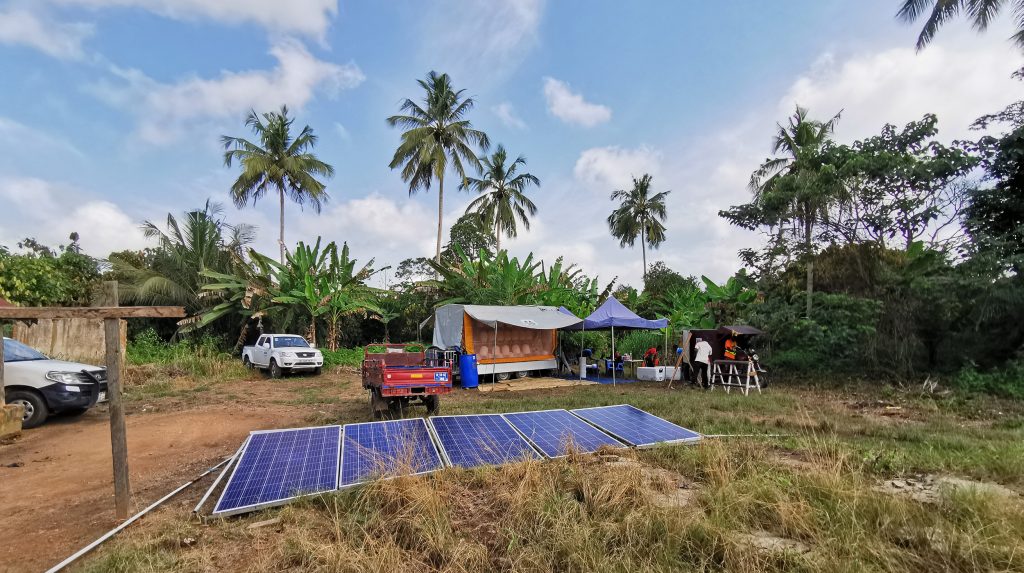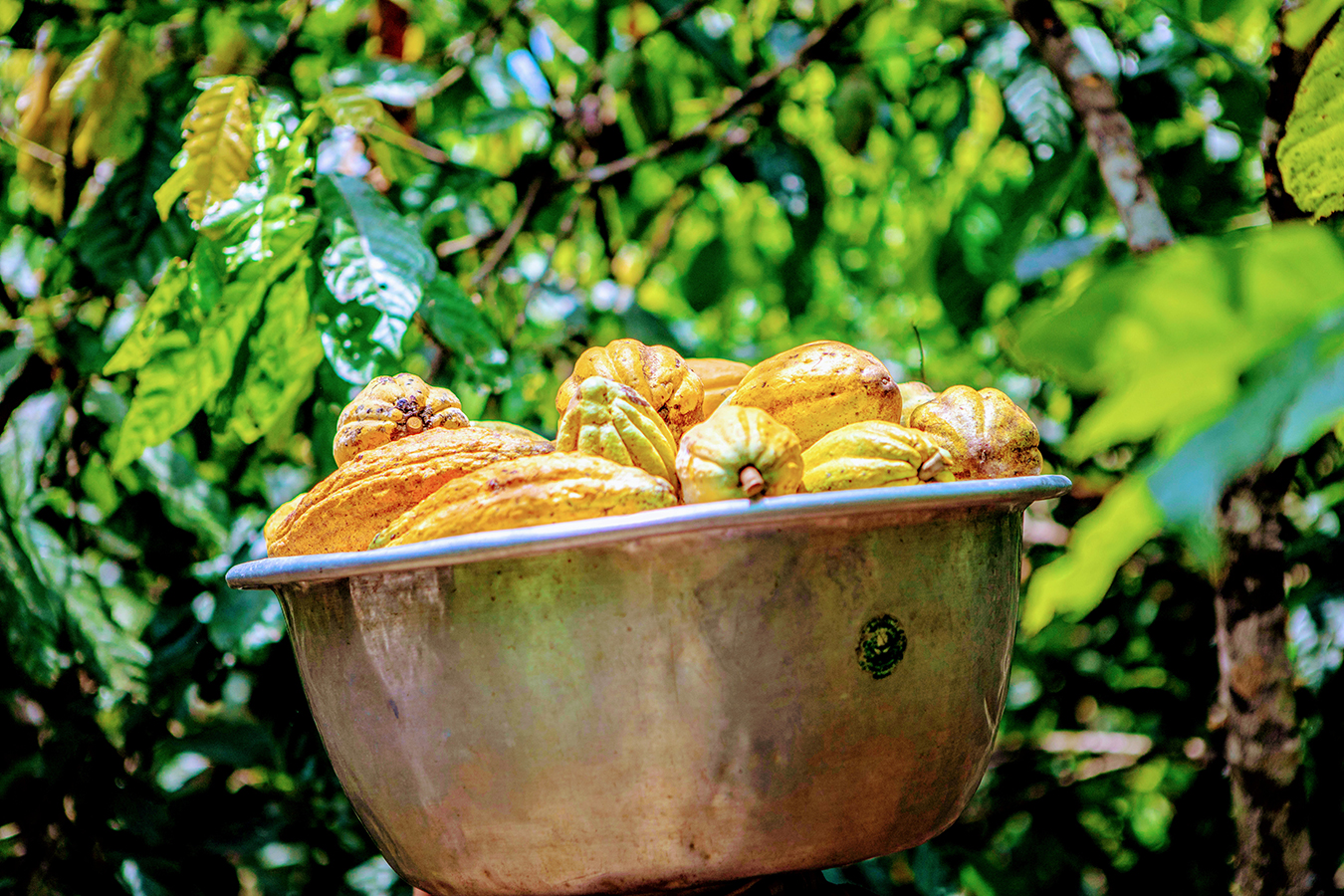By Ahmed Aziz in Ghana and Jonathan Jones in South Africa
‘You must act as if it is impossible to fail.’
This Ashanti saying encapsulates the spirit of many cocoa farmers in Ghana, where the frequency and severity of extreme weather events have only intensified. A recent Intergovernmental Panel on Climate Change (IPCC) report exposes the worst climate impacts are, “strongly concentrated amongst the poorest vulnerable populations.”
In the cocoa producing communities of Ghana, this daily reality is shrinking crop yields. To boost resilience, rapid adaptation is crucial and solutions, many born from the Ghanain rainforest, are already being rolled out in cocoa growing communities.
Cocoa and climate change
Ghana is the world’s second largest supplier of cocoa after neighbour, Côte d’Ivoire. Exports of cocoa account for 3% of the Ghanain economy and support approximately four million households. The majority of agriculture production in the country is dependent on rainfall, as Ghanain cocoa farmers are largely smallholder farmers with farms under two hectares in size.
These smallholder farmers rely on regular rainfall to grow their cocoa – which is why droughts and infrequent rain caused by climate change pose an existential threat. With average annual rainfall in Ghana predicted to drop by over 20% by 2080, lives, livelihoods, and entire economies are on the line. Ghanain cocoa producers are now acting as if it is impossible to fail.
A growing number of climate adaptation solutions are being developed and implemented in the heart of the same rainforest that gives the world millions of tonnes of cocoa beans every year. Many farmers are turning to innovative ways of applying agroforestry – agriculture that incorporates cultivating trees – to ensure their crops are more resilient.
Agroforestry techniques in cocoa farming involve planting an average of 20 trees per hectare. The trees provide shade so that the cocoa pods do not burn. The tree leaves provide a ground cover that locks in water, making the cocoa growing system more resilient to drought, all while returning nutrients to the soil. In other words, the benefits of cocoa agroforestry are significant – from improving soil health to providing a healthy micro-climate for the cocoa farms to thrive in.
Making the initial investment of planting trees, with other farm management support services, could help boost the farmers’ produce and income significantly. But financing these new farming techniques is out of the reach for many cocoa growers, especially those farming small parcels of land. For example, a cocoa farm under two hectares of degraded land would need to plant about 40 trees and incur additional costs to maintain the farm until the cocoa pods begin to bear fruit.
Innovative solutions at the landscape level

Koa’s mobile solar units that extract previously wasted fruit pulp that create jobs in farming communities of Ghana. Source: Koa.
This is where the Landscape Resilience Fund (LRF) comes in. Given that many farmers struggle to obtain affordable finance, the LRF provides investment — loans and technical training — to highly innovative, climate-smart projects and small to medium sized enterprises (SMEs) to give them better access to private, return-seeking investors. This is why the LRF, alongside IDH Farmfit Fund, invested US$3.5 million in cocoa innovator Koa.
Koa is a social enterprise that has unlocked a new decentralised value chain around the previously unused cocoa pulp. In this process, the cocoa pods are opened on the farm, the fruit pulp is extracted using mobile solar units in the nearby communities, and then pasteurised in a local factory, creating jobs in these rural communities. Increased income for rural farmers empowers whole communities, especially women, while improving resilience to extreme weather like drought, by providing alternative ways to use the cocoa crop. By training farmers in sustainable agricultural practices and post-harvest processing, Koa is also able to reduce the environmental impact of cocoa farming.
Catalytic capital for climate resilience
Globally, there are over 270 million smallholder farmers who lack access to affordable finance to invest in their farms, increase productivity, and transition towards climate resilient food production. The LRF is meeting this challenge with an innovative blended finance approach to provide a scalable way to finance climate adaptation.
By providing funds to the LRF, companies and philanthropic investors can create a catalytic effect. Each targeted US$1 million investment from the LRF could unlock up to US $3 million of additional finance from the private sector through commercial loans. This climate leadership also creates a snowball effect: every new tranche of funding or commercial loan convinces other funders, companies, and leading investors to fund climate adaptation, allowing the LRF to go further, faster.
From farmers to philanthropists, we must all act as if it is impossible to fail this climate adaptation challenge. Communities across the world are developing innovative solutions to tackling poverty and becoming more resilient to climate change. But unleashing the potential of these solutions depends on finance stepping up to the challenge. It is now or never.
The LRF’s landscape approach to building climate resilience unlocks positive benefits for biodiversity and gender equity. Investors and philanthropic funders interested in supporting this work can contact the Landscape Resilience Fund today to find out more.
